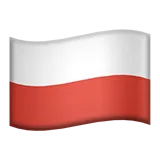Pines, Oaks and Bushes in the Corporate Forest
Our next article in the prioritization series* tells about different types of business organizations. To illustrate the differences between them, we’ll use a tree metaphor created by Alexey Kulakov, JetStyle’s CEO and co-founder. To be on the same page, let’s agree that a business is best described as a continuous process of value delivery; this idea will help us reveal the tree metaphor. Let’s go on this journey into the corporate forest!
If you missed the first articles:
*Introduction to prioritization in product development
*Review of Eisenhower Matrix as the most mainstream prioritization technique
Imagine that your product is a tree. Users interact with everything that’s above the ground, e.g. interfaces, communication with clients, goods, and ads. In terms of our metaphor, these processes are the trunk and branches of the tree. They represent the core value that your product delivers to users.
The underground part of the tree represents your back office: production, legal and financial processes. It’s a huge system that every business possesses, and it’s invisible to the users’ eyes.
Let’s see what kind of trees there are.
Pine tree

Pine trees have a well-defined strong trunk. They have a central axis, and everything else grows around it. Alexey believes that pines represent the most viable type of a business architecture.
While growing, pines aim to stay thin and tall. Metaphorically, they state that they know their place in the market, they have a firm foundation, so they channel the rest of the resources to grow a rich top. The crown of the pine is the value delivery. This concept is really simple and elegant.
An obvious example of such an architecture type is a search engine. Its core task is to provide answers to users’ questions. It has a page with search results, which is the main value users get from the product. If a search engine gives relevant information, it becomes more popular among the audience. The rest of the services (e.g. Photos or Maps in Google) are extra branches, they perform secondary functions.
Fir tree
.png)
Fir trees have one truck as well, but also they have lots of side branches growing from the bottom. We can’t see the trunk directly, but it’s easy to identify it.
Pines cannot turn into fir trees in real life. However, according to Alexey’s typology, it is a natural process. When a tree (a business) has a central axis (value delivery), it may grow some extra branches, because it wants to amplify the process of value delivery.
For example, an iPod was the first physical streaming service. People used it to listen to music from the Apple Store. We can say that an iPod is a pine. An iPhone was created as a device for using apps on the Store; Apple Store is a fir tree.
Oak

Oaks are complicated: you never know how it intended to grow in the first place. Sometimes its branches are so big that they look like separate trees.
One example of oak architecture is a holding company. It has several major processes, all of them are automated. Some of them are connected, and some are completely separate.
This structure is much more complex than that of a pine. It’s hard to see if a new branch is a part of the core product’s concept, and if it’s going to fit the value delivery flow.
Bush

This is the most common architecture type. Bushes do not need a concept, they just grow. You create a bush if you simply decide to start a business. You don’t care if a branch gets broken – you have dozens of those.
However, bushes lack focus. They can never get big and win a market, and their lifespan is short.
We cannot give a universally famous example of a bush-type business: such businesses do not have any special recognizable concept. They are just a series of random initiatives, quite often small-sized and locally based.
Alexey’s first place of work was a holding company that consisted of a vegetable wholesale warehouse, an IT system, a taxi, 2 touristic agencies and 2 web studios. We bet you don’t know its name!
Mushroom

Mushrooms are even worse than bushes. It’s the go-to option for grafting. Users see just a small part of the system that’s above the ground. The rest is pretty intricate and hidden from the eyes. Mushrooms don’t interact with the clients, and there’s no continuous flow of value delivery.
Mushroom-type businesses appear when owners don't aim to create any value, or want to launder money, or plan to create a pine but put all focus ‘underground’.
Can you grow a pine where you grew mushrooms?
You can, but you can’t turn fungi into pine roots. If you want to grow a pine, just plant a pine instead of a mushroom. Our experience shows that these are two completely different types of business architecture. If you try to improve a mushroom system, you’ll have to waste a lot of resources to fix mistakes of the past.
What does a good business architecture look like?
It should have a central axis, the trunk all the other processes are based on. If there’s no axis and we can’t visualize the structure as a flow of value delivery, then we’re dealing with an unsuccessful type of business architecture.
A viable business architecture has a well-defined trunk. Trunk is a metaphor for the core flow of value delivery.
We use the tree metaphor to illustrate a simple concept. Your vision of a business is based upon one core process, i.e. the process of value delivery. It’s ok if you change the means of value delivery. However, if you want your business to grow, you have to have a clear vision of your audience and the value you deliver.
***
We can help you with defining your type of business architecture and finding ways to make the best out of it. orders@jet.style








